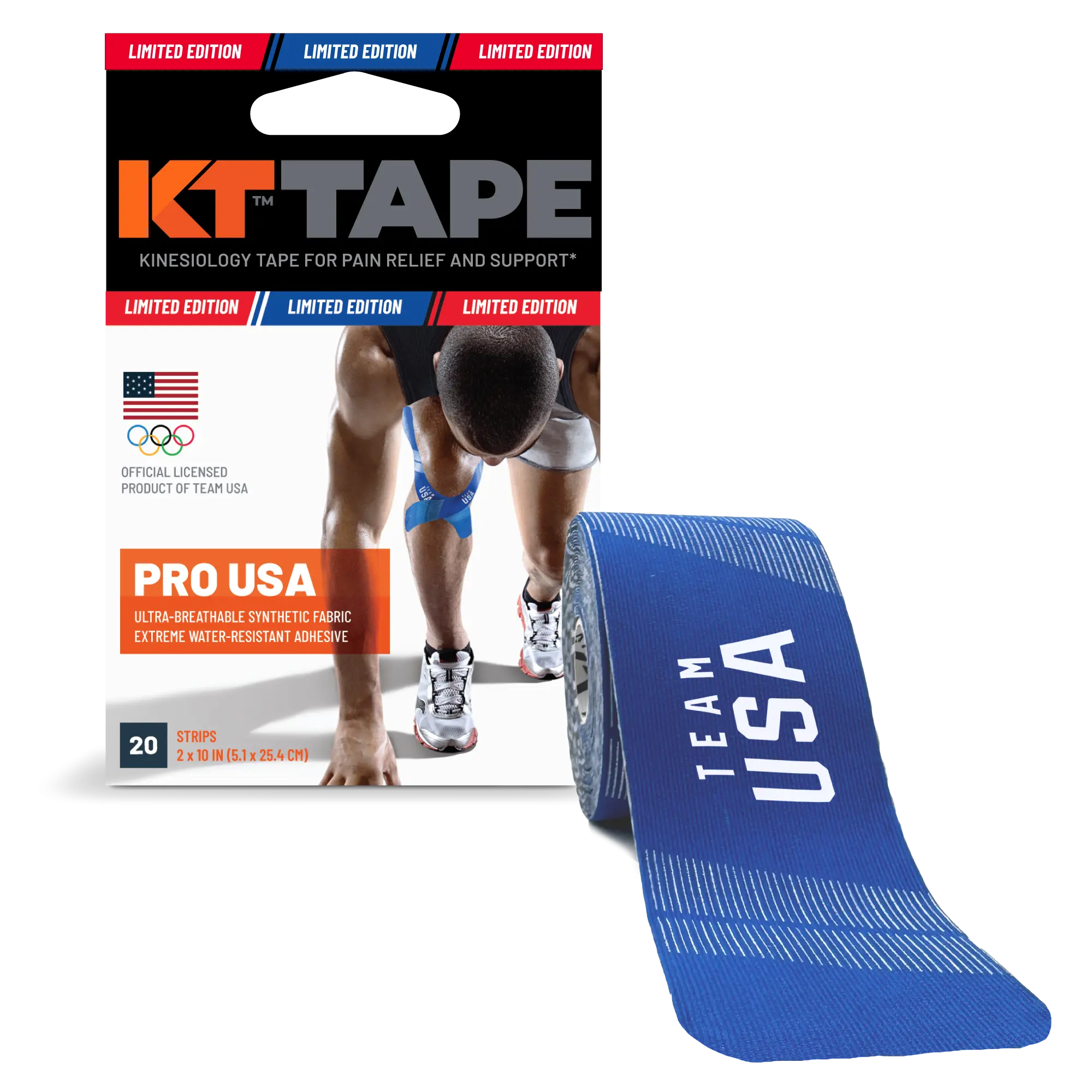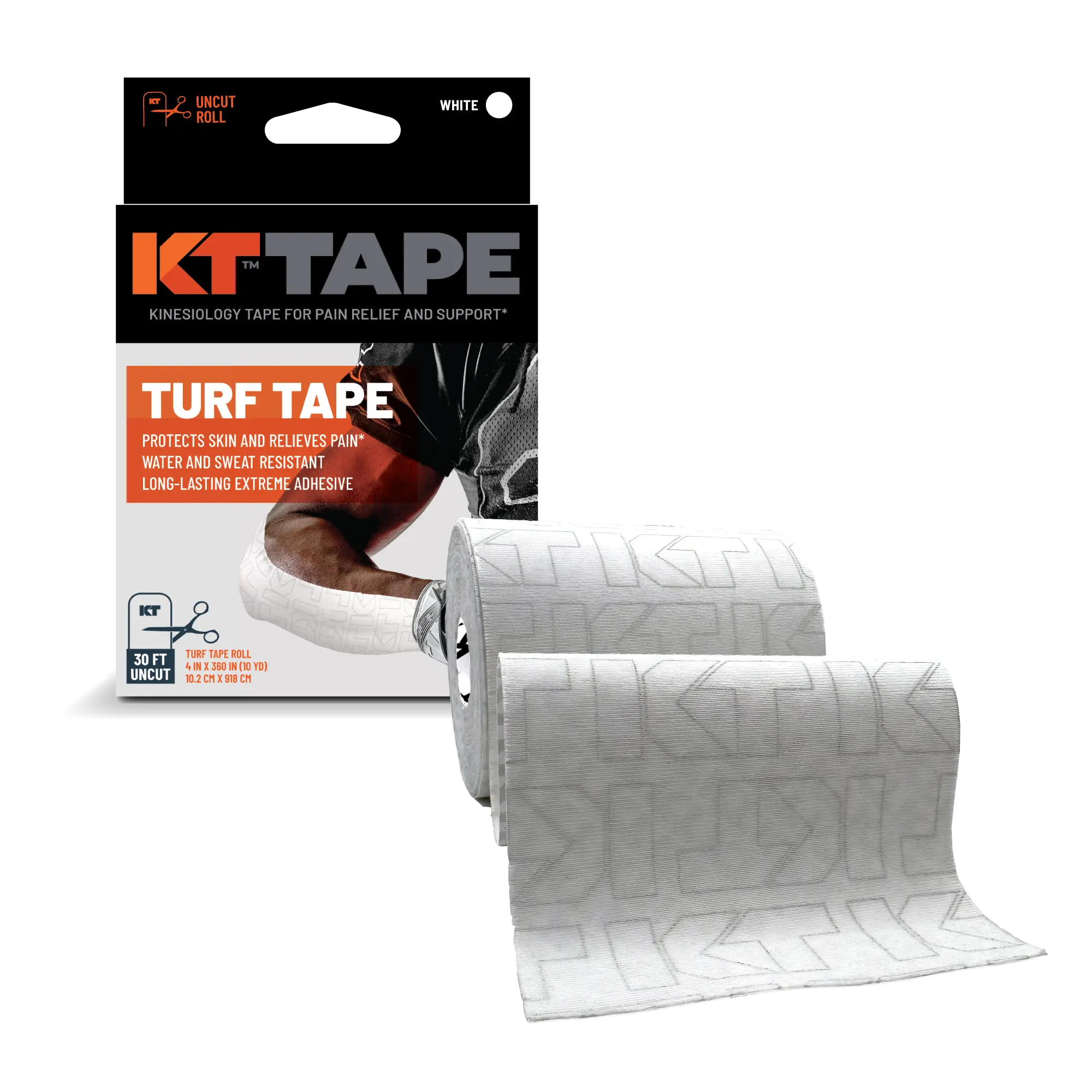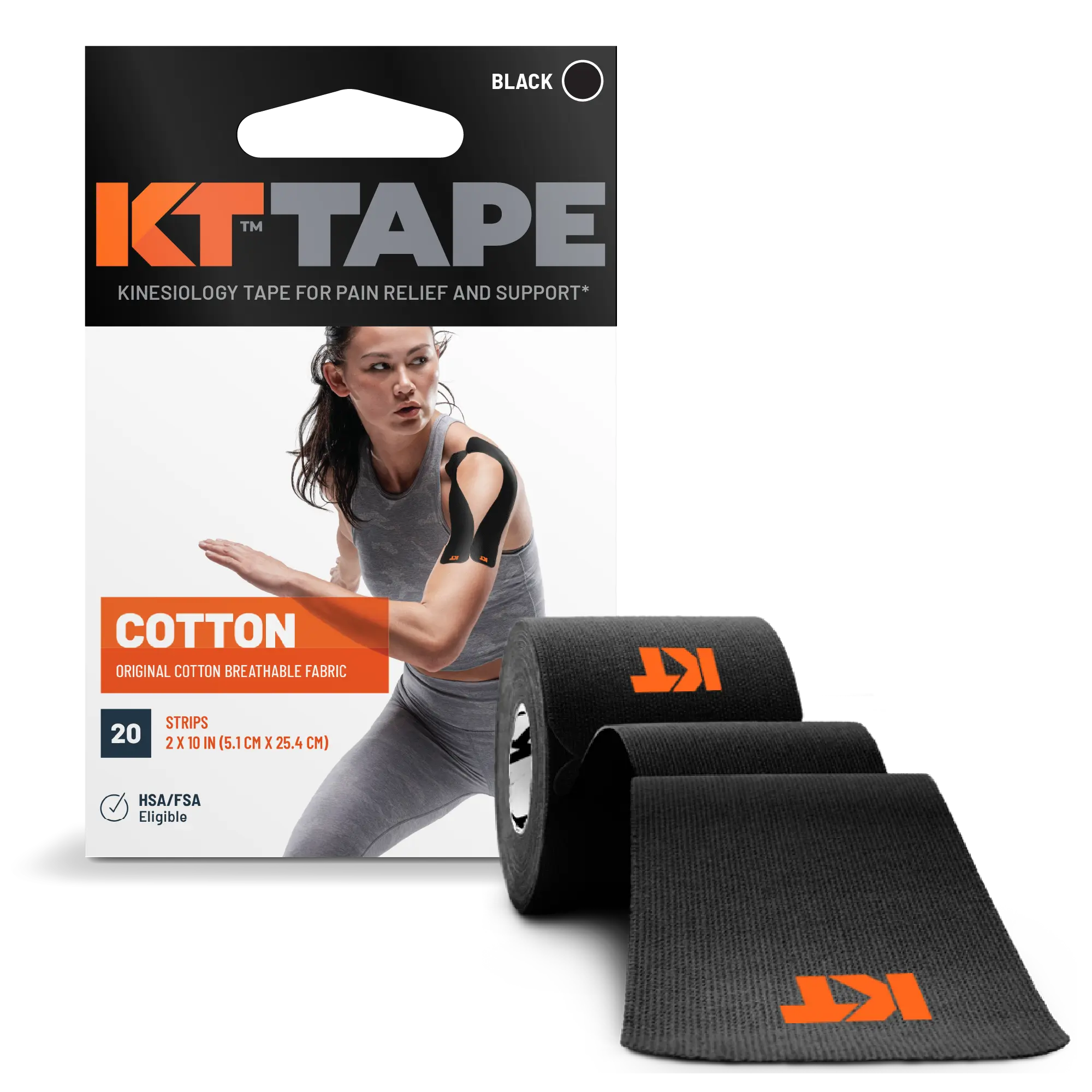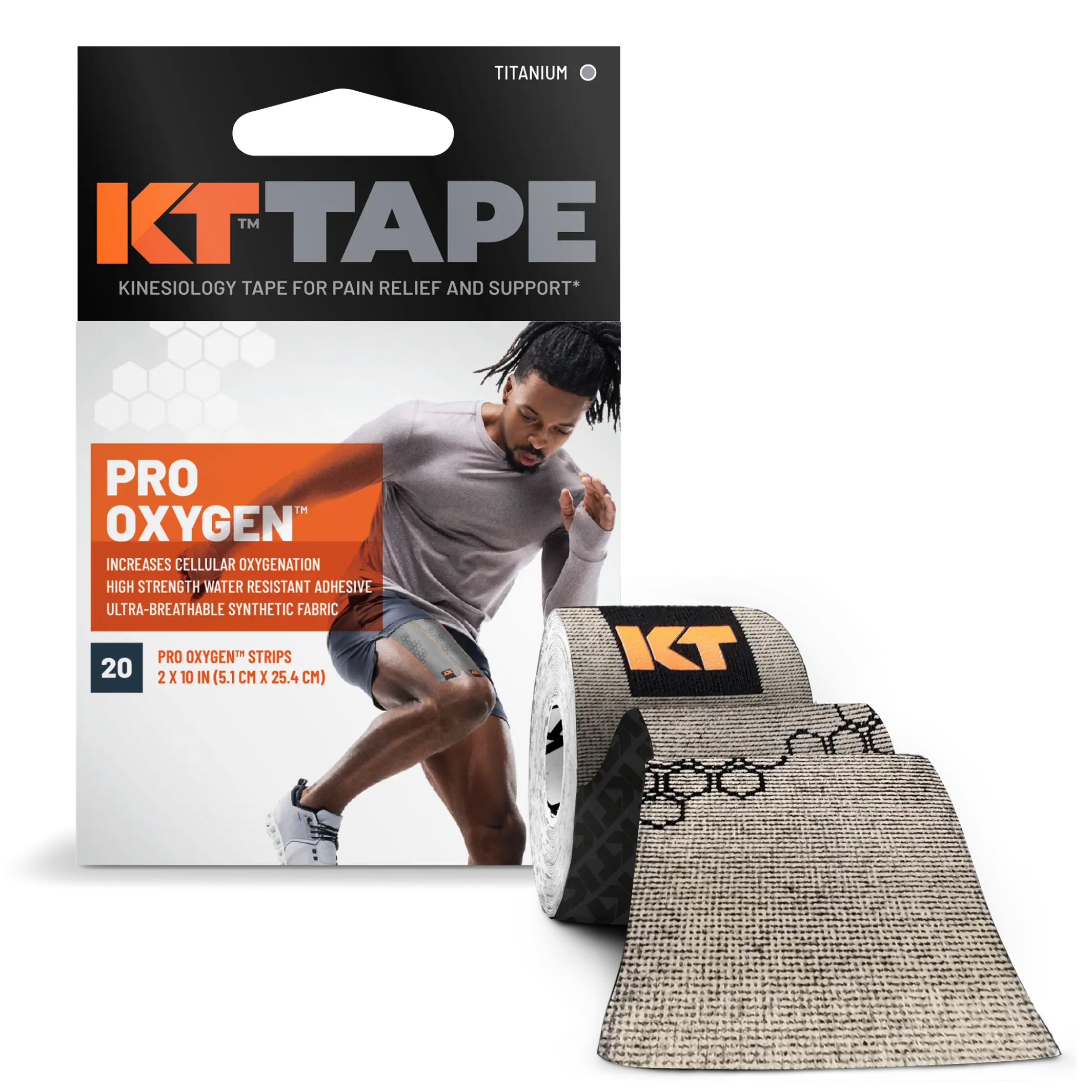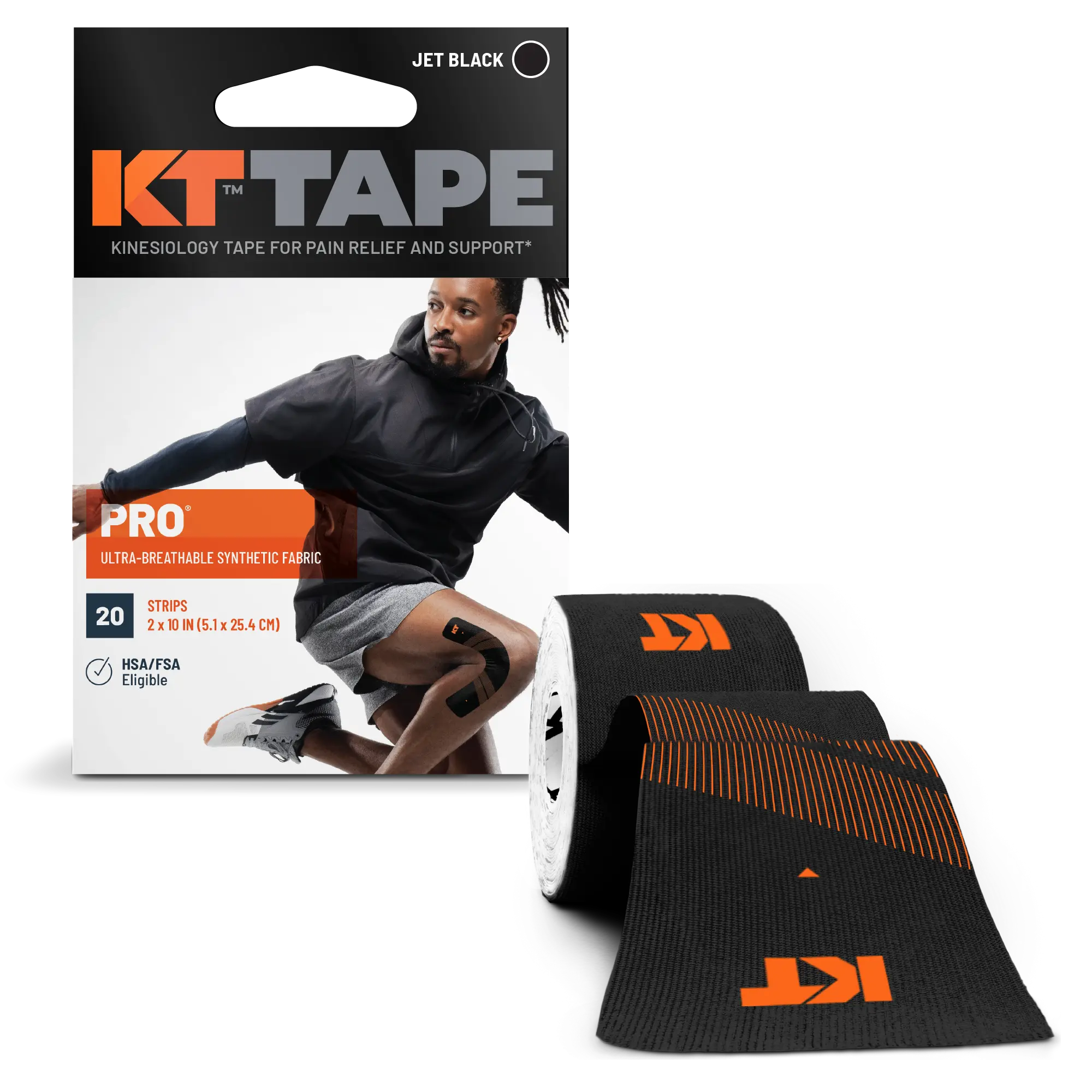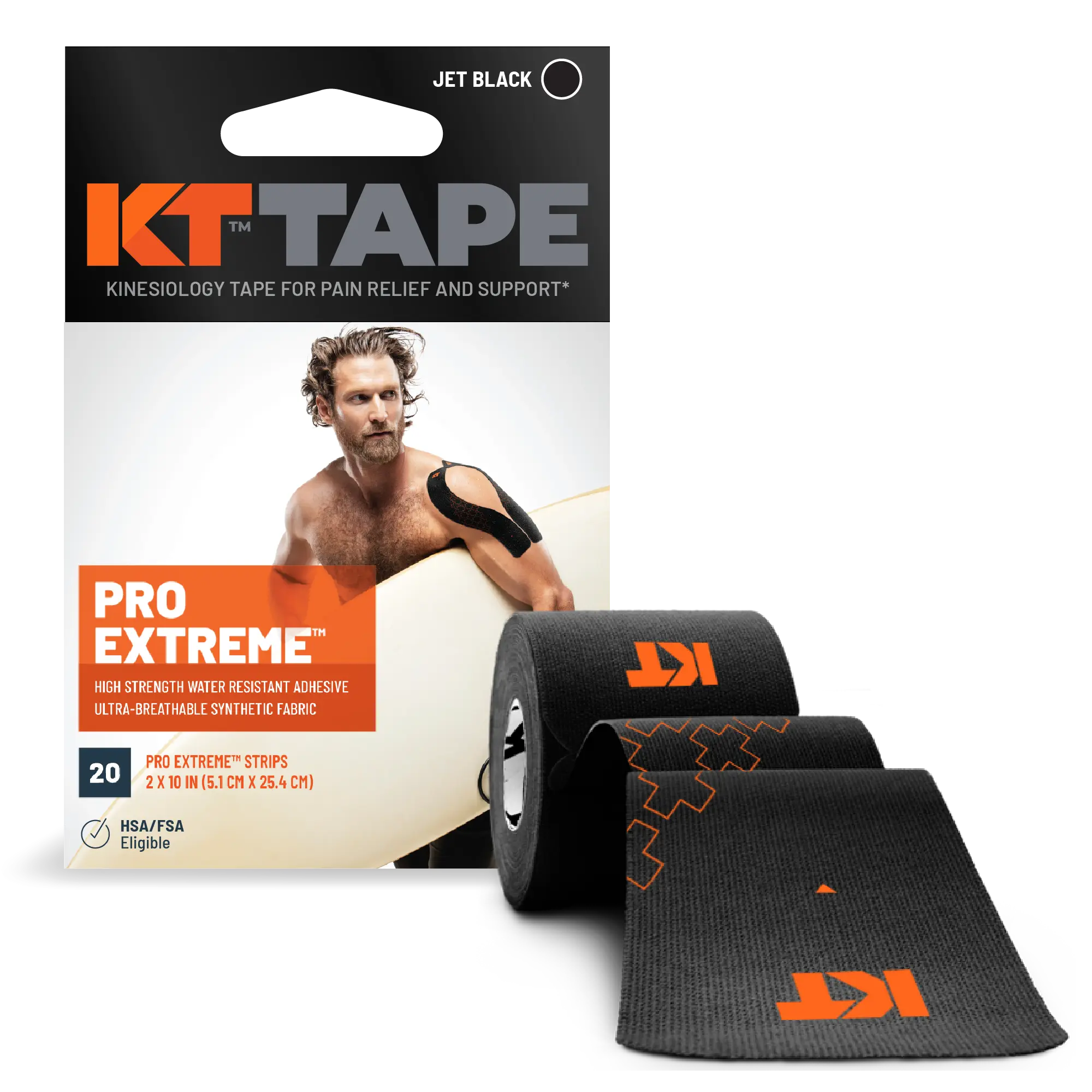- Common Injuries
- General Injuries
- Back Area
- Upper Body
- Lower Body
- Feet
- Best Practices to Prevent Common Sports Injuries
- First-Aid Treatment Tips
- The PRICE Method
- When to See the Doctor
Common Injuries
These injuries are why the risks involved in competitive sports are high. To get to the end of the line, you must overcome any obstacles that may come your way. These kinds of injuries are the worst nightmare for athletes because their body is their tool to win. Without it functioning at an optimal level, these athletes won't be able to achieve their goals. Keeping the body fit comes naturally to athletes, but protecting it from injury does not. All sports carry the risk of injuries for players. Preempting an injury is just not possible. However, a basic knowledge of common injuries and how to treat them can promote a safer sports experience. The most frequent types of injuries usually involve three areas: muscles, ligaments, and bones. When there's a sudden impact or extreme stress on any of these three parts of the body, it can turn into strains, sprains, or fractures. The more high-contact the sport is, the higher the risk of a traumatic injury.
Strains usually happen when a muscle is overstretched. The term pulled muscle refers to the condition in which the tendon or muscle fiber is pulled beyond its usual range. This happens a lot when you engage in an activity that your muscles are not very used to or even prepared for. Athletes go out of their way to do a good stretch before playing, and that's because of the fear of pulled muscles. It's not good advice to come out running in a full sprint without warming up the necessary muscle groups. The same goes for any type of outdoor activities, like hiking, biking, and climbing.
Meanwhile, sprains refer to the tearing or overstretching of ligaments, the bands that connect your bones to a joint. A sprain can happen anywhere there's a joint in your body. When you land on the wrong side of your foot, the joint receives all the pressure and forces the ankle to take on an awkward position. The same thing usually happens to the knees.
Strains and sprains are often not treated correctly. If you don't take care of your injury immediately, the strain can worsen over time. The affected area will have spasms, swelling, and tenderness. You can treat strains at home by applying kinesiology tape on the injured area. With sprains, the throbbing pain increases when you're in motion and decreases when you're in resting mode. Your limbs won't be able to bear your usual weight as there will be discomfort and, at times, excessive swelling. Sprains are more severe since they can keep you in bed or on crutches for several weeks. A severe sprain can even keep you on the bench for months.
Torn ligaments are the worst. Athletes are not entirely safe from them, considering that they run fast, jump, and do quick stops all the time. In most cases, a torn ligament is one of the occupational hazards of being an athlete. These constant joint motions and pressure can take a toll on the legs and, eventually, result in an injury. A fracture or a bone dislocation is as extreme as injuries can get. The deformity and inflammation will be very visible in the affected bone area. A lot of people mistake a sprain for a broken bone because they have almost-similar signs, but fractures leave a numbing effect or tingling sensation. Your bones will definitely look out of place and often will produce a black or bluish color on your skin. Sprains and fractures should always be treated as medical emergencies and should be confirmed by a doctor immediately.
A blow to the head because of a fall or a collision with another player can result in a concussion. It's the most common head injury in contact sports. When a person falls headfirst, the impact is almost instantaneous. What you need to keep in mind is that not all concussions produce immediate symptoms-which makes the injury more lethal. Athletes who get hit in the head will brush it off in most cases and end up not getting any medical care at all. A concussion is life-threatening and can escalate very quickly. Any impact or blow to the head, however minor it seems to be at the onset, warrants a trip to the emergency room. It becomes even more critical if you lose consciousness right after the impact. These are the symptoms that may indicate a concussion.
- An intense headache or throbbing pressure in the head
- A feeling of sleepiness or fogginess
- Having trouble remembering how you feel or the event that brought about the blow to your head
- Inability to answer basic questions or responding to them in a slurred speech
- Vomiting right after impact (in which case, you need to get to an emergency room right away)
Because of the series of muscles and ligaments on our spine, the back area is very prone to injury. Stretching them too much can cause tears and can also weaken the muscles. If you're always lifting heavy objects or you frequently fall or bend over, those can also have short- or long-term effects. For most athletes, bodybuilding is a given to stay in shape and to maintain optimum performance. However, extreme physical exertion can often result in bulged disks, more commonly known as herniated disks.
While there are other known causes for back problems, inflamed disks are usually the common cause of sciatica. Sciatica nerve pains that stem from herniated disks are common among athletes. The shocks of the 3-D motions that you do daily—bending forward and backward and twisting and turning, depending on the type of sports you play—are absorbed by the disks. The disks are found in between the vertebrae. When the repeated motion is too focused on one side, the disks will be displaced and will impinge on the nerves on the sides of the vertebrae, thus causing sciatica.
For bodybuilders, the pressure that comes from bending down and lifting heavy weights can wear down on the soft tissues outside the spinal column. When this happens, without the soft cushion in between, the end points of the spinal disks rub together and cause friction, which then activates the sciatica symptoms. Impact or collision can also cause disruption on the disks and the soft tissues and jellylike substance between them. Sciatica pain will run down your glutes, thighs, and legs, creating a tingling or numbing sensation. At first, you will think you've injured your leg at some point, but the pain is actually coming from your back and running down to your nerve endings.
Sciatica is not a diagnosis but more like a symptom of an underlying back problem. This can be caused by any number of things, which is why it's crucial to have it diagnosed by a doctor. When the doctor has confirmed the cause of the symptom, you can do a few home exercises that will relieve the pain. For most athletes, when doing conditioning or training for an upcoming game, chances are you'll end up not completing the sets because of your back pain.
Training with kinesiology tape has helped lots of athletes to manage pain. For low back pain, use KT Tape to alleviate the ache and inflammation in the area:
- Prepare two strips of kinesiology tape for this application.
- While standing, flex forward up the waist to put a slight stretch on your sacroiliac joint (SI joint). You can identify your SI joint by the dimples on your low back.
- Peel the paper protection partially at the center. While holding on to the paper ends, apply one strip of KT Tape horizontally on the site of pain with an even, moderate stretch.
- Be careful not to touch the adhesive and stretch the ends as you lay the tape.
- Gently rub the tape to make it adhere better to the skin.
- For the second strip, remove the paper at the center, and hold the ends of the KT Tape.
- Lay the strip vertically on the site of pain, then rub gently to improve adhesion.
- You can use the same method to add more strips diagonally on the site of the discomfort.
Watch our video tutorial for the proper way to apply KT Tape on your SI joint.
Arm Injuries:
Tennis Elbow - When you're unable to lift or grip ordinary objects that you can easily reach for on normal days, then you may have to investigate the cause further. Tennis elbow occurs when the tendons in between the muscle and the bone are swollen due to overuse or repeated movement. In other cases, swelling can also occur after a direct blow to the elbow. It usually starts as a tender ache on your elbow. Without treatment or support, it gets worse until it turns into a burning sensation. The pain comes when you start gripping items, and it moves toward your forearm to the back of your hand. You'll know your condition has become worse when you have trouble holding on to simple items like a comb or even a bottle of shampoo. You'll feel pain immediately because every move you make with your arm puts a lot of stress on your elbow. Your grip will eventually weaken, and you'll have trouble keeping up with your training routine. Tennis elbow can happen to anyone and can occur at any age. You need to get a doctor to confirm if the pain you're feeling is caused by that condition.
There are several things you can do at home to help with the pain. With the right treatment and exercise, you should be able to regain your strength and see improvements in five to six weeks:
- Apply kinesiology tape or two to three ice packs on your elbow.
- Rest your arm as much as possible by minimizing the repetitive movement that caused it.
- Take over-the-counter pain relievers, like ibuprofen or aspirin, to reduce the ache and swelling.
- Do a couple of gentle stretches on your arms several times a day to increase blood flow.
- When do you feel the pain?
- Is the pain intense? If so, how much?
- Does the pain happen while you're playing or at rest?
- Is your shoulder swelling suddenly or showing signs of deformity?
- Do you feel like your shoulder is popping out?
If your answer to the majority of the questions is yes, then you need to seek medical attention.
There are times when the shoulder pain comes from other problems in other parts of the body. The most common one athletes experience—especially those who rely on their shoulders a lot to play sports—is called bursitis. It is often caused by repetitive movements. The bursa is essentially a sac that's filled with fluids, and it functions as a cushion between the shoulder bones, muscles, and tendons. When the bursa becomes inflamed due to overuse, this increases friction on the joint.
Much like the pain of tennis elbow, the pain of bursitis moves through other parts of the body, including the elbow, the hip, and the knee. When you feel unusual pain on your shoulder, don't wait for it to build up. Get your shoulders checked to find out if it's just soreness caused by your training or playing or if it's something more serious. If the doctor confirms that it's bursitis, then you need to follow a treatment plan. Doctors will prescribe medicine to reduce inflammation. Most athletes go for a shoulder steroid injection because of its immediate effect, but this practice has been discouraged because of its tendency to mask other underlying conditions in the athlete's body. Physical therapy is the best treatment alternative for athletes who wish to prolong their playing years. For temporary relief, try to avoid activities that can aggravate your shoulder pain. Resting the injured area, for the time being, is always good advice. You can also ice the affected shoulder during the day and take over-the-counter anti-inflammatory drugs. Ultimately, preventive measures are the best way to avoid bursitis. Try to avoid sudden movements as much as you can. Instead, gradually build up the force of your training, and do a couple of stretching exercises before you start carrying out repetitive motions. Wrapping your shoulders with KT Tape also helps in supporting injuries.
How do you know when the pain in your neck is not just stiffness from your sleeping position? If you've recently taken a hard hit on the head or fallen from a tackle, you need to have a doctor pinpoint where the pain is coming from. It may be caused by your neck's nerves, bones, or tissues. How do you know when the pain in your neck is not just stiffness from your sleeping position? If you've recently taken a hard hit on the head or fallen from a tackle, you need to have a doctor pinpoint where the pain is coming from. It may be caused by your neck's nerves, bones, or tissues.
When your head gets thrown to one side forcefully, the injury is known as the burner. The pain moves toward the shoulders then down to the arms. Players in contact sports, like football or basketball, encounter these kinds of neck injuries regularly. If the force is extreme, the spinal cord can get damaged, which may lead to paralysis. Injuries on the neck should not be taken lightly. Your doctor may recommend using a brace for a couple of days if the neck injury is severe. During the recovery stage, you can reduce swelling by applying ice packs on your neck. You can also pop over-the-counter pain relievers like aspirin or ibuprofen. When your neck starts to feel better, make sure you warm it up by doing a couple of slow stretches. Build up your way up until your neck fully recovers.
Groin Pull - Parts of the lower body are often susceptible to strains, but some conditions mimic the symptoms of a much more serious condition. Athletes like professional players of soccer and hockey use their legs a lot to compete, so groin pulls happen to them often. When there's too much tension on the inner thigh and the groin, they have the tendency to become overstretched or pulled. Sudden jumps or movements can stretch the muscles in the crotch when you don't follow proper stretching and preparation.
To tell whether you've pulled your groin muscles, you can try walking a few meters to see if tenderness or pain is coming from the inner and upper thighs and the groin area. Try bringing your legs together or raising your knee. If the strain is at its beginning stages, you should be able to move without any limits. When it escalates, you'll start to notice spasms in the same area and a bit of swelling and bruising. When you start seeing these signs, you need to get to a doctor for a diagnosis. These symptoms are also similar to other underlying conditions, such as inflammation of the pubic bone, arthritis, labral tears, and many more.
You need to make sure that it's only a strain so that you can start administering relievers and adjust your training methods. Having a physical therapist or trainer with you as you recover from the injury is ideal for any athlete. This will accelerate the healing process. Without them, you can also try a couple of home remedies by adding stretching programs to ease the pain. Squats or adductor stretches have helped a lot of athletes suffering from groin pain. When you do them, make sure that you are pulling the muscle gently. You'll feel that stretching sensation in your thighs and groin, but it shouldn't cause you any pain. If it's painful, then you are not doing it right. Supporting systems like muscle tapes can also help you recover faster.
Athletes who play in sports that have multiple stops and starts, like tennis, basketball, and soccer, are prone to shin splints. Shin splints result from too much pounding on the shin bones and the muscles surrounding them. When the muscles are swollen, they put pressure on the bone, which leads to inflammation. Severe cases can also lead to cracks in the bones of the leg, resulting in more pain. Athletes engage in strenuous activities with the use of their legs all the time, which makes them susceptible to shin splints.
Shin splints come in the form of a dull ache on your lower leg, numbness in the feet, and pain on both sides of the shin bone. Doctors usually recommend at least two weeks for rest and recovery. However, if you've had the same pain for a couple of months, the doctor may recommend a surgical procedure called fasciotomy. To speed up the healing process, you can apply ice packs or put kinesiology tape on your lower leg. Keep your legs elevated as much as possible. For massage, you can use a foam-based roller. You also need to wear shock-absorbing shoes and avoid training on slightly slanted terrains. Most importantly, before you resume your training, always warm up your legs with effective stretches. Increase the training intensity gradually until you recover full leg strength.
Accidentally landing on one side of the foot and putting all your weight on it can cause a hamstring strain. When the leg is stretched out before your foot hits the ground, the hamstring band, where three muscles (the semimembranosus, biceps femoris, and semitendinosus) reside, are pulled beyond capacity. This condition occurs mostly to runners. You'll know you've pulled the muscles too far when you feel a sharp pain immediately at the back of your leg.
At times, the pain comes with a popping sensation, depending on the severity. In most cases, you won't be able to continue running or doing the activity you were engaged in. If it's a mild strain, you'll feel pain when you try to stand on your leg, and there will be a little swelling. If it gets severe, you won't be able to walk or straighten your leg because of the pain. You'll need to be taken to a medical facility right away to prevent further tearing of muscles in your leg. It's best not to try resuming playing right away if you've strained your hamstring. For immediate relief, use an ice pack. Applying kinesiology tape to the hamstring area can also help provide pain relief and support to the muscle. After which, you should give your injured leg enough time to rest to avoid further damage or pain.
As the weight-bearing joints, knees are on top of the list when it comes to receiving accumulated injuries. Regardless of the physical demands of your chosen sport, the knees are always under a constant mode of pressure. Overusing the knee joints can gradually lead to developing a condition. If normal leg activities (e.g., kneeling, squatting, going up and down the stairs) start becoming painful, then that should prompt a doctor's appointment, especially when there's mild swelling at the front of your knee.
You may have patellofemoral syndrome, more commonly known as runner's knee. Bending your knees repeatedly and undergoing high-stress training can put massive pressure on the femur and the tibia. To prevent the two bones from rubbing together, they are separated by complex soft tissues, including ligaments, meniscus, and bursas (fluid sacs). These delicate parts of the knees are also responsible for the leg's stability. When the soft tissues start to wear away because of overuse, the distal part of the femur begins to weigh down on the kneecap, also known as the patella. The patella moves up and down on the femur's furrow. When you bend your knees, the patella and the groove engage. The more you bend repeatedly, the more the pressure piles up on both knees. At times, the patella gets misaligned because of constant use and stress. That's when you start feeling pain in your kneecap and its surrounding areas.
A runner's knee is an accumulated type of injury. If you have a diagnosis for runner's knee, you need to map out your treatment and recovery plan with a doctor. A runner's knee does not heal overnight. It takes time and effort for the kneecap to fully recover from the wear and tear. For any type of knee injury, applying kinesiology tape is a proven method for relief. It's also helpful in joint mobilization and realignment. Other forms of short-term relief to manage pain include icing and resting, but long-term recovery may consist of corrective measures on your walking and running patterns. Jumping and landing techniques should be adjusted to put the pressure off the knees as much as possible.
Twisting the knee and landing on it the wrong way is something a lot of athletes struggle with. When you have a habit of being in hyperspeed motion and suddenly stopping dead in your tracks to change directions, you're bound to suffer an injury. A torn anterior cruciate ligament, commonly known as ACL, is an athlete's worst fear. This type of knee injury has hurt a lot of promising athletic careers. When your knee produces a popping sound right after your twist and landing, chances are you've torn your ACL.
A torn ACL is quite a tricky injury. You will not feel the pain right after the popping sound. The swelling comes first, which happens during the first two to four hours after the wrong landing. The swelling will get worse as the hours pass. You'll find it harder to walk on the affected leg, and the knee joints will somehow feel looser. Your range of leg motion will lessen. You won't be able to bend or turn your knee. When you get to the 12-hour threshold, then you'll start feeling the sharp pain in your knees. By then, the swelling has worsened to the point that you won't be able to put your weight on your knee. Only a doctor can confirm through a series of leg tests and an MRI scan if you have a torn ACL. Once it's confirmed, the doctor will prescribe anti-inflammatory drugs and pain relievers. If the tearing is severe, you will be recommended to proceed to surgery. During the rehabilitation phase, which usually lasts about a month or two, you'll be going through a variety of exercises to regain your knee's strength and help you walk normally again. This phase varies, depending on your body's ability to heal. Using KT Tape can provide additional support as you try to recover.
Speeding up, slowing down, and then doing an abrupt stop can't be avoided when you're an athlete. After your knees, the feet come in second when it comes to the most abused body parts during sports. Even when you're not doing contact sports like dancing, gymnastics, running, and tennis, you're still susceptible to injury—and the usual bearers of hurt for solo sports are the heels.
The Achilles tendon, the springy group of tissues at the back of your ankle, endures the force that comes from sudden movements or stops. It's the same band that allows you to rotate your toes and point them in any direction. The intensity of abrupt pressure can be too much for the tendons on your feet to bear. The same popping sound happens when you tear your Achilles tendon. The swelling comes next, which will limit the range of motion you can have with your feet. You'll start having trouble standing on your toes and feeling pain right above your heel. The more severe the injury, the stiffer and more tender your heels are going to be. The good news is that an injury on the Achilles tendon tends to heal on its own. A robust regimen of resting, icing, compressing, and taping on the affected area will help you. Depending on the injury's severity, doctors may recommend that you insert a heel lift on your footwear while your tendons are recovering from the injury. Preventive measures like following proper stretching exercise before going for any kind of physical activity are always encouraged.
The plantar fascia is to your feet what palms are to your hands. This tissue that connects the toes to the heel bone is also prone to injury. The arch of the foot gets tons of wear and tear even when you're not playing. Your plantar fascia is the sole's shock absorber. Too much pressure and too many repetitive motions can cause inflammation on the tissue. This type of pain is common among long-distance runners.
When your plantar fascia is inflamed, you'll feel pain at the arch of your foot. You'll have trouble walking normally, and you'll immediately notice it on your first few steps in the morning. Doctors will confirm the inflammation through a series of tests. The degree of the pain varies for each person and also depends on the severity of the injury. Once doctors have isolated where the pain is coming from, they'll prescribe anti-inflammatory medicines to be taken for several weeks. If the pain is severe and the medication is not working after several months, your doctor will recommend surgery and a more aggressive approach to therapy.
Best Practices to Prevent Common Sports Injuries
Nothing beats protection when it comes to injury. Wearing the right gear is crucial. Adequately fitted protective gear (including pads for the neck, shoulders, elbows, chest, knees, and shins) can save and extend an athlete's playing years significantly. Helmets, mouthpieces, and face guards are equally important. Though it would be wrong to assume that protective gear can prevent all injuries, it's always better to be safe than sorry later. Playing safe is the key to winning against injury.
Effective communication on the field can also help reduce the risk of injuries. Baseball players have a way of avoiding collision with other players by shouting "I got it" during the game. Common courtesy on the ground, like telling someone their shoelaces are untied, can actually save someone's life. Playing while injured goes against the grain of sports safety in every way.
An athlete's love for the game is eternal, which makes it very tempting to push the body to the limits and get right back even when it is hurting. Playing before an injury has had a chance to heal fully is never a good idea, no matter how important the game may be. It can exacerbate your injury and cost you more time for recovery later on or, worse, end your athletic career abruptly.
First-Aid Treatment Tips - The immediate response for sprain, strain, or bone injuries should always be anchored on preventing further damage. An injury can occur at any time or any place. Athletes who play outdoor sports are more difficult to respond to as compared to those who play at the indoor arena. Cyclists, marathoners, motorists, and other outdoor athletes have much more specific first-aid treatment needs. But regardless of place or time, first aiders should be keen on identifying which part of the body is injured. The next few minutes that follow are crucial. Deformities are the first thing to watch out for. Bone fractures or dislocation should be supported, and any unnecessary movements should be avoided at all costs. It's essential to keep the injured limb or joint elevated at all times. If ice is available, apply the pack near the part you suspect to be injured. If a compression bandage or a kinesiology tape is at hand, wrap it around the leg or the arm.
If possible, avoid direct application of first-aid treatments to the injured body part. Do not apply heat compression as it will increase the bleeding if there is any. The same thing is true when using alcohol: it doesn't help with the bleeding, and it can actually increase swelling. Massages should be avoided as well unless there is a physical therapist on site. Keep in mind the PRICE method.
The PRICE Method
- P: protect from further injury
- R: restrict activity
- I: apply ice
- C: apply compression
- E: elevate the injured area
When to See the Doctor
Generally speaking, everyone should see their doctor regularly for preventive care. Depending on the demands of the sports, doctors will usually give you an idea of the level of medical care you need and how often your visits should be. Typically, athletes who have clocked in years of playing require more frequent preventive visits. A person with previous injuries may need to have constant checkups, as compared to someone who has never been injured before.
When symptoms become apparent or start showing between preventive visits, it will be easier for your doctor to identify them and come up with a treatment plan. You can never go wrong with early detection. Other than that, most symptoms or pains can be handled at home. Strains usually do not require a doctor's attention. Small cuts or bruises can be treated by cleaning them with soap and water and then applying an antibiotic ointment and a protective covering afterward. If you're unsure about the need to see a doctor, go anyway.
When it comes to your health and safety, always err on the side of caution. You should never deny your body some good old doctor's advice if you're feeling pain in a specific part of your body. If the pain doesn't respond to the usual icing, compressing, and resting formula, then you need to go to a doctor immediately. Most athletes have a high tolerance for pain, which is why you can't rely on them to know their own injury. What may feel like a fractured bone to an ordinary person may seem like a strain for an athlete. That said, it's always important to seek medical advice when the pain you're feeling doesn't go away.
Sources https://www.webmd.com/men/features/seven-most-common-sports-injuries#1 https://www.unitypoint.org/livewell/article.aspx?id=591d8cf1-1ee5-4cb3-b662-a5f21f6f13bc https://familydoctor.org/common-sports-injuries/ https://www.verywellfit.com/common-sports-injuries-a-to-z-list-3119253
*KT Tape is not clinically proven for all injuries or applications.




